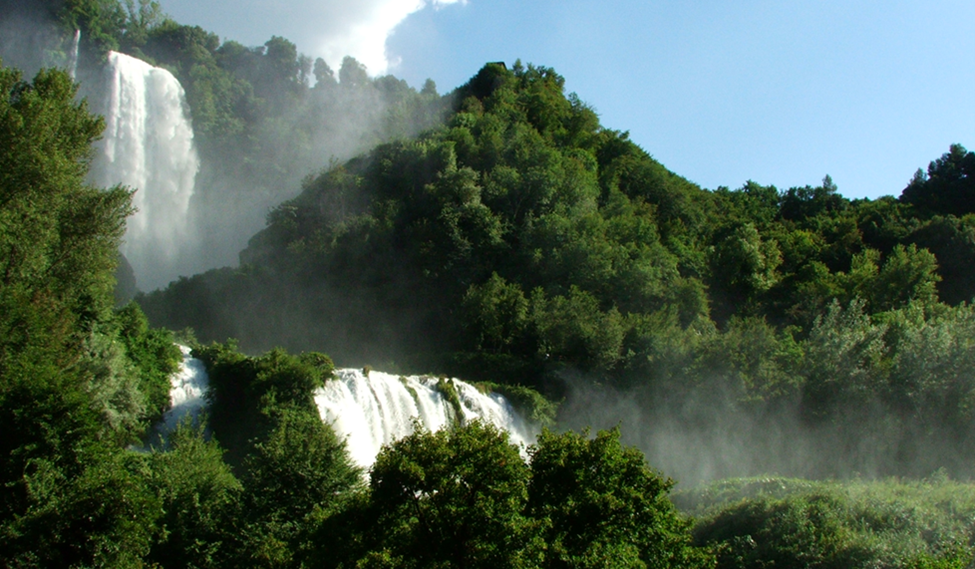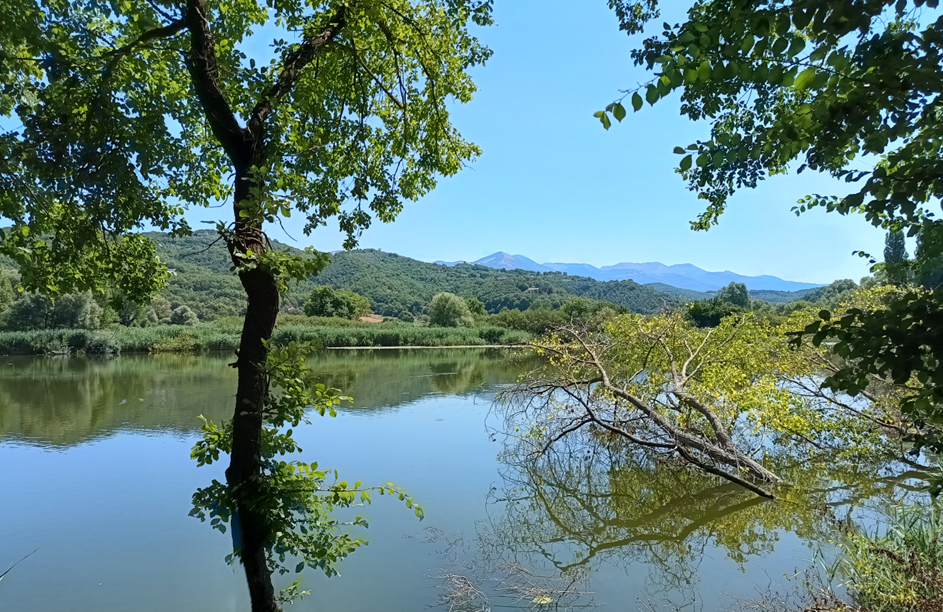Marmore Waterfalls (Cascata delle Marmore)

The Marmore Waterfalls are located in Southern Umbria, close to the border with the Region Latium. This complex of waterfalls is formed by the confluence of the River Velino with the River Nera through three jumps; the first jump is 85 m tall, while all the waterfalls together are 165 m. These are the tallest artificial waterfalls in Europe; they were, in fact, constructed during the Roman Empire. The consul Manius Curius Dentatus, in 271 B.C., ordered the construction of a canal (Cava Curiana) to drain the “Lacus Velinus”, an enormous lake and marshland that occupied the plain of Rieti. During the Middle Ages, the lack of maintenance of this canal brought a decrease in the water flow due to the continuous deposition of calcium carbonate and the formation of travertine. Therefore, the plain of Rieti began to flood again, causing an increase in problems, including the diffusion of malaria. In 1422, Pope Gregorius XII ordered the construction of a new canal. However, from that time up to the beginning of the 19th century, the difficult regulation of the water flow provoked intermittent floods causing huge damages and numerous casualties in the valley below and even in the city of Terni. These events required repeated modifications to the waterfall’s shape (Gregori & Troiani 2005, Lorenzetti 1990).
Lake Piediluco

Piediluco is a picturesque lake located at the border between the regions of Umbria and Latium, in the province of Terni. It is the second largest lake in Umbria, with a surface of 1.85 km2, a maximum depth of 21.5 m and a perimeter of about 13 km. Like the waterfalls, Piediluco represented a popular stop of the European “Grand Tour” between the 17th and 19th century. The local landscape is fascinating, surrounded by hills and forested mountains. On the northern part of the lake is the village of Piediluco, dominated by an ancient fortress (13th-14th Century) on top of a hill.
The shape of Lake Piediluco is the result of a series of transformations that began during the Quaternary (2.6 million years ago) and ended around the XVI century, when the lake acquired today’s shape and size. In 1924 the water regime of the lake was transformed and exploited for hydroelectric purposes, and its catchment area was extended from 75 to 2100 Km2. Its natural tributary is the Fuscello stream. The other two tributaries are man-made canals, one that brings the water from the Velino River and the second one, 42 kilometers long, mostly flowing underground across tunnels conveying part of the waters of the Nera River into the lake. The water inflow and outflow of the lake are nowadays regulated to fulfill the energy needs of the city of Terni. The emissary is the Velino River, which is diverted towards Marmore, where it flows into the Nera River, forming the waterfalls.
During the summer season, the lake undergoes marked thermal stratification, while during the rest of the year, full water circulation occurs. In the last 30 years, there has been a progressive warming of its waters. The differences in temperature in the water column are quite limited in the central part of the lake, but are larger in the southern arms, where the water turnover is slower due to the peculiar shape of the lake and the presence of marsh vegetation. The intake of organic and inorganic substances triggers the growth rhythm of aquatic macrophytes inducing the increase in dissolved oxygen values in the surface layers and the steep decrease of oxygen concentration in the deeper layers dueto the greater demand for oxygen by the bacterial communities responsible for algal decomposition.The complex hydraulic regulation system of the lake and the consequent internal hydrological dynamics have induced physical, chemical, and biological modifications of the water body. In the same way, over time, the increase in human activity and industrialization has contributed substantially to the variation of the trophic state of the lake. Overall, Piediluco is classified as a natural eutrophic lake with a tendency towards hypertrophy in the central and southern sectors and mesotrophy in the western sector (Stufara & Sconocchia 2005). Close to Piediluco is the little Lake Ventina, but only a very small part of it is in the Umbria Region, while most of its surface belongs to the Lazio Region. This small waterbody represents a shrine of biodiversity, hosting all the plant species and communities present at Lake Piediluco and even more.
To get more information about the excursions, please download the excursions guide from the document.
📍Address
Università di Perugia
Dipartimento di Chimica e Biologia
via Elce di Sotto, 8 – 06123 Perugia (PG)
🚗 Get Directions
